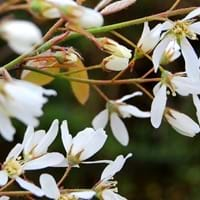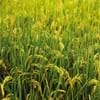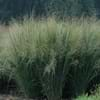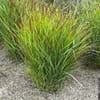Life Span
Annual
Perennial
Origin
Eastern Africa, Northern Africa, Southern Asia, Southeastern Asia
United States, Northeastern United States, Mid-Atlantic United States, Southeastern United States, Central United States, South-Central United States
Types
Akia Beruin Red, Ofada Rice, Topaz
shadbush, wild plum
Habitat
Muddy habitat
Swamps, Thickets, Woods
USDA Hardiness Zone
8-15
4-9
Sunset Zone
Not Available
2a, 2b, 3a, 3b, 4, 5, 6
Habit
Clump-Forming
Oval or Rounded
Minimum Height
Not Available
Minimum Width
Not Available
Flower Color Modifier
Bicolor
Bicolor
Fruit Color
White
Red, Violet, Plum
Leaf Color in Spring
Green
Green, Gray Green
Leaf Color in Summer
Light Green
Green
Leaf Color in Fall
Green
Yellow, Red, Orange, Orange Red
Leaf Color in Winter
Not Available
Not Available
Leaf Shape
Grass like
Oval
Plant Season
Summer, Fall
Spring, Summer, Fall
Sunlight
Full Sun
Full Sun, Partial Sun
Growth Rate
Very Fast
Medium
Type of Soil
Clay, Loam
Clay, Loam, Sand
The pH of Soil
Acidic, Neutral, Alkaline
Acidic, Neutral, Alkaline
Soil Drainage
Average
Average
Bloom Time
Not Available
Spring
Tolerances
Wet Site, Salt
Not Available
Where to Plant?
Ground
Ground
How to Plant?
Seedlings, Transplanting
Grafting, Seedlings, Stem Planting
Plant Maintenance
Medium
Medium
Watering Requirements
Keep plant submerged in water
occasional watering once established
In Summer
Ample Water
Drought Tolerant
In Spring
Lots of watering
Moderate
In Winter
Consistently
Less Watering
Soil pH
Acidic, Neutral, Alkaline
Acidic, Neutral, Alkaline
Soil Type
Clay, Loam
Clay, Loam, Sand
Soil Drainage Capacity
Average
Average
Sun Exposure
Full Sun
Full Sun, Partial Sun
Pruning
No need to prune
No need to prune, Prune if you want to improve plant shape
Fertilizers
Fertilize the soil before planting, Phosphorous, Potassium
All-Purpose Liquid Fertilizer, Less fertilizing
Pests and Diseases
Bacteria, Birds, fungus, Nematodes, Rats, Snails, Viruses
Bacterial leaf spot, Beetles, Powdery mildew, Red blotch, Rust
Plant Tolerance
Salt, Wet Site
Drought, Heat And Humidity
Flowers
Insignificant
Showy
Flower Petal Number
Single
Single
Foliage Texture
Medium
Medium
Foliage Sheen
Matte
Matte
Attracts
Birds
Birds, Deers, Hoverflies
Allergy
Not Available
no allergic reactions
Aesthetic Uses
Not Used For Aesthetic Purpose
Not Used For Aesthetic Purpose
Beauty Benefits
Good for skin
Improve skin condition, Not Available, Skin Problems
Environmental Uses
Air purification, Prevent Soil Erosion
Agroforestry, Food for animals, Food for birds, No fertilizer, pesticides, or herbicides needed, soil stabilisation
Medicinal Uses
Energy, High blood pressure, Skin Disorders, Swelling
Diarrhea, Gastrointestinal disorders, Menstrual Disorders
Part of Plant Used
Seeds
Fruits
Other Uses
Starch, Used as a nutritious food item, Used As Food
Food for animals, Used As Food
Used As Indoor Plant
No
No
Used As Outdoor Plant
Yes
Yes
Garden Design
Container, Dried Flower/Everlasting, Edible, Herb / Vegetable, Houseplant, Tropical, Water Gardens
Edible, Feature Plant, Foundation, Fruit / Fruit Tree, Mixed Border, Screening / Wind Break, Shade Trees
Botanical Name
ORYZA
AMELANCHIER arborea
Common Name
Rice
Common Serviceberry, Downy Serviceberry, Juneberry, Shadbush
In German
Reis
Felsenbirnen
In French
riz
Amélanchier
In Spanish
arroz
Amelanchier
In Portuguese
arroz
Amelanchier
In Latin
rice
Amelanchier
Phylum
Magnoliophyta
Magnoliophyta
Class
Liliopsida
Magnoliopsida
Clade
Not Available
Dicotyledonous
Tribe
Not Available
Not Available
Subfamily
Not Available
Malvoideae
Number of Species
Not Available
Importance of Rice Plant and Juneberry
Want to have the most appropriate plant for your garden? You might want to know the importance of Rice Plant and Juneberry. Basically, these two plants vary in many aspects. Compare Rice Plant and Juneberry as they differ in many characteristics such as their life, care, benefits, facts, etc. Every gardener must at least have the slightest clue about the plants he wants to plant in his garden. Compare their benefits, which differ in many ways like facts and uses. The medicinal use of Rice Plant is Energy, High blood pressure, Skin Disorders and Swelling whereas of Juneberry is Diarrhea, Gastrointestinal disorders and Menstrual Disorders. Rice Plant has beauty benefits as follows: Good for skin while Juneberry has beauty benefits as follows: Good for skin.
Compare Facts of Rice Plant vs Juneberry
How to choose the best garden plant for your garden depending upon its facts? Here garden plant comparison will help you to solve this query. Compare the facts of Rice Plant vs Juneberry and know which one to choose. As garden plants have benefits and other uses, allergy is also a major drawback of plants for some people. Allergic reactions of Rice Plant are Not Available whereas of Juneberry have no allergic reactions respectively. Having a fruit bearing plant in your garden can be a plus point of your garden. Rice Plant has no showy fruits and Juneberry has showy fruits. Also Rice Plant is not flowering and Juneberry is not flowering . You can compare Rice Plant and Juneberry facts and facts of other plants too.





